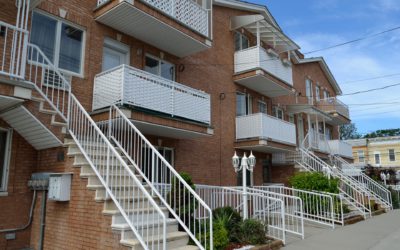Being a landlord can contribute to the community and to your cash flow. Nevertheless, all landlords need to know that part of being a landlord means bearing some risk of eventually being sued by a tenant.
The key is to follow practices that are fair, equitable, and responsible. Here are 10 things you need to do to avoid a lawsuit from any future tenants.
Make sure your lease follows state law.
Many states mandate the inclusion of certain information in rental leases. Some regulate deposit amounts and late fees. Some, like California, require clauses pertaining to past sex offenders in neighborhoods. Make sure all the information your state requires is part of your standard form. For more information on your state’s specific laws, check out our guides.
Draw up a lease that specifies rights and responsibilities.
Make sure that your standard lease is very clear about rights and responsibilities. Is heat and electricity a tenant responsibility? Is it yours? Specify these things in the lease. Do tenants have access to laundry facilities but must pay for each load? Include that in the lease, as well. The more detailed you are, the less likely a tenant will find a loophole in your lease.
Screen your tenants.
Don’t have potential tenants sign a lease just because they look responsible. Your application form should include a place for references. These can include former landlords, employers, and banks or credit unions. Call all of them, and get facts on your potential tenant’s past.
To protect yourself from a potential lawsuit, you want to make sure the person has no criminal history. Even a history of bounced checks or nonpayment could indicate your potential tenant has a need for money or a disregard of responsibilities. You don’t want other tenants becoming victims of the one you didn’t vet properly.
Handle the security deposit properly.
Some landlord-tenant disputes center around whether a landlord or tenant should pay for repairs. Repairs after a lease is up come out of the tenant’s security deposit if they are deemed responsible. Generally, if a repair is due to normal wear and tear the landlord is responsible.
If a unit has been significantly damaged during a rental period, it may be the tenant’s responsibility though. It is a good idea to take pictures of each room and area before a new tenant moves in. In fact, you can encourage the tenant to take their own pictures, as well.
Pictures will give you a record of the rental property’s condition when the tenant moved in. Was a carpet new and shiny on the first of the month, but riddled with cigarette burns a year later? Was a kitchen table new one year and stained the next? Having documentation will protect you from a tenant’s claiming the responsibility is yours — and ensure that the cost of repair will come out of their deposit.
If repairs are due to normal wear and tear, your tenants are not responsible and they should get their security deposit back in full.
Keep the property in good condition.
Landlords are responsible for their property being in good, habitable condition. There must be heat and adequate ventilation and air conditioning. There must be light. If you live in a cold climate, snow and ice must be removed from the walkways on your property so they are safe to walk on within a reasonable period after a storm. If there is construction on the property, the equipment must be fitted with Tier 4 emissions-reducing equipment. If this is the case, it’s also considerate to check in on your tenants to see how they are affected by any dirt and debris from the project.
Ensure reasonable safety from crime.
Your property must have adequate locks and security if it’s necessary in the area. A tenant whose apartment is broken into because it lacked a lock could bring legal action.
Check the property for environmental hazards.
Every existing property needs to be free of environmental hazards. Have inspections done for radon, mold, and lead. If you find there is an environmental hazard that needs to be removed, disclose that to your tenants. Be transparent about what it is and when they can expect it to be fixed.
Maintain your tenant’s privacy.
Your tenant is entitled to privacy in their home, even if you own it. Most states require at least 24 hours’ notice before a landlord enters a tenant’s place. Some states may require more, so make sure you know your state’s laws inside and out.
Treat all tenants fairly.
Make sure that your tenants know your rules and regulations. It’s a good idea to have them written out. Either provide a copy of the lease or post it, if your rental is a multi-unit dwelling, in a communal area. Then, follow all rules and regulations with every tenant. If you use Rentler, you can use digital leases to make it even easier.
Follow proper eviction procedures.
If an eviction becomes necessary, it’s painful for both you and the tenant. Be sure to know what your state and federal regulations are and follow them. Most states mandate that tenants must be given notice of intent to evict. Some give them a certain period of time to make payments. Be clear about what the regulations and procedures are in your state.
Although tenant-landlord relations can be very harmonious, they can also become the subject of major disputes. Following the tips above will ensure that your tenants will be treated fairly and that you will be protected from a lawsuit.
Originally published on Groundwork






0 Comments